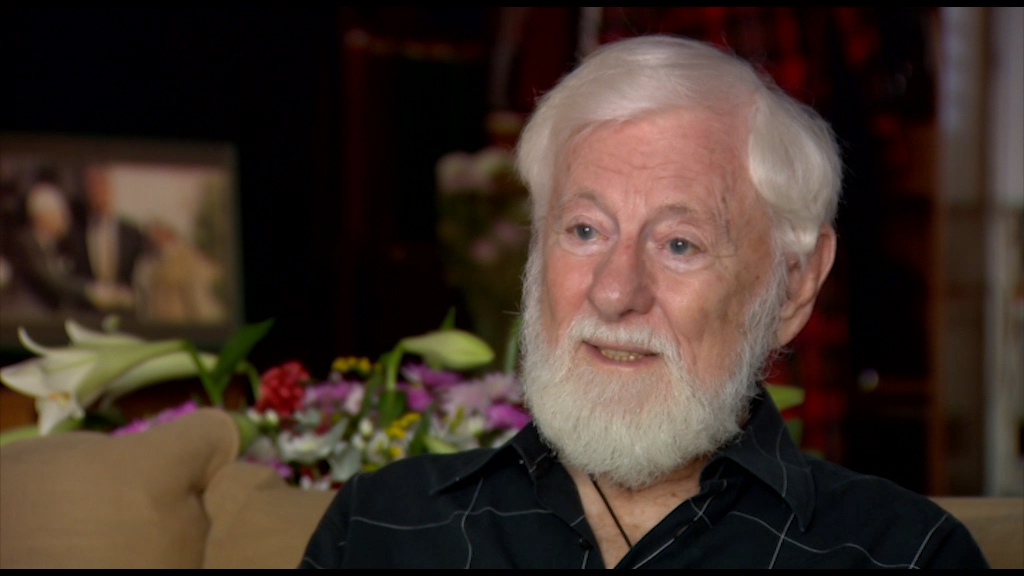NEXT STORY

Hamas wins the elections
RELATED STORIES

NEXT STORY

Hamas wins the elections
RELATED STORIES


|
Views | Duration | |
|---|---|---|---|
| 301. Supporting Palestinians | 10 | 05:23 | |
| 302. My friend, the fanatic Abu-Tir | 11 | 05:08 | |
| 303. Israel’s biggest success | 9 | 03:35 | |
| 304. Hamas wins the elections | 12 | 04:18 | |
| 305. No one wants an official peace | 16 | 04:21 | |
| 306. Edward Said | 29 | 05:52 | |
| 307. Surviving two attempted assassinations | 20 | 01:45 | |
| 308. The siege of Gaza | 14 | 03:18 | |
| 309. Coming under attack | 11 | 04:16 | |
| 310. Hijacking of the Ashkelon-Tel Aviv bus | 9 | 04:08 |


זה אגב אחת ההצלחות הגדולות של ישראל, שהם הצליחו לפלג בין שתי התנועות עד כדי כך ששתיהן, כל אחת מהן לחוד, כמעט משתפת פעולה עם ישראל נגד השני. זה הפשע שהתחיל בזה שרבין הפר את ההסכם שהוא חתם עליו זה עתה, ולא פתח את המעברים בין הגדה ובין עזה. לפי ההסכם הוא היה אמור לפתוח ארבעה מעברים בטוחים. בהסכם לא כתוב איך לפתוח. זה יכול היה להיות כביש אקס-טריטוריאלי, כמו שהיה בגרמניה בין גרמניה המערבית וברלין. זה יכול היה להיות רכבת קלה. בטח יש עוד אפשרויות. מעולם לא נפתח! ברגע שלא פתחו את המעברים, למעשה הבטיחו שיהיה פילוג. אין כמעט, זה שוב ה"כמעט" של רחל, אין כמעט דוגמא בהיסטוריה שארץ מפוצלת לשתיים ושטח אויב ביניהם, הצליחה להישאר מאוחדת. הדוגמא הקלאסית זה פקיסטאן. פקיסטאן הייתה מדינה אחת בשני חלקים, באמצע השטח של הודו. וזה התפלג, התפלג בצורה קשה במלחמת אחים. והיום יש פקיסטאן מצד אחד, ובנגלדש מצד שני. אם השלטון לא יכול להפעיל את סמכותו, אין הרבה סיכוי ששטח יישאר מאוחד. ואכן כך זה קרה: ברגע שישראל הפרידה את הרשות הפלסטינית מעזה, כמעט הובטח שיהיה פילוג מפני שעזה היא יותר דתית, תמיד הייתה. החמאס הרבה יותר חזק בעזה מאשר בגדה. הגדה תמיד הייתה יותר, אולי "ליבראלית" היא לא המילה הנכונה, אבל יותר מתונה. יש בורגנות. בגדה יש בורגנות, בורגנות מסחרית וכל האווירה שמה היא, חוץ מחברון אולי, אין בה האווירה שראינו אותה בעזה.
This, by the way, is one of the greatest successes of Israel: that they were able to split the two movements so that both of them − each of them separately − are almost collaborating with Israel, one against the other. This was a crime initiated by Rabin when he violated the agreement that he had just signed, and did not open the crossings between the West Bank and Gaza. According to the agreement he was supposed to have opened four safe crossings. In the agreement it does not say how these would have been opened. It could have been an extraterritorial highway, as it had been in Germany between West Germany and Berlin. It could have been a light railway. There were certainly other possibilities. They were never opened! By not opening the crossings, in fact it ensured that there would be a split. There are almost no examples in history where land was split in half, with enemy territory in the middle, where the two halves managed to remain united. The classic example is Pakistan. Pakistan was a country split into two parts, divided by Indian territory. And it split – split badly with a civil war. Nowadays, there is Pakistan on one side and Bangladesh on the other. If the government cannot exercise authority, there is little chance that the area will remain united. And so it happened: once Israel separated the Palestinian Authority from Gaza, it almost guaranteed that there would be a split, because Gaza is more religious − it always has been. Hamas is much stronger in Gaza than in the West Bank. The West Bank has always been… perhaps liberal is not the right word, but more moderate. Bourgeois. The West Bank has a middle-class commerce, and the whole atmosphere there, except in Hebron perhaps, does not have the atmosphere that we saw in Gaza. After all, Hamas won the elections in the West Bank.
Uri Avnery (1923-2018) was an Israeli writer, journalist and founder of the Gush Shalom peace movement. As a teenager, he joined the Zionist paramilitary group, Irgun. Later, Avnery was elected to the Knesset from 1965 to 1974 and from 1979 to 1981. He was also the editor-in-chief of the weekly news magazine, 'HaOlam HaZeh' from 1950 until it closed in 1993. He famously crossed the lines during the Siege of Beirut to meet Yasser Arafat on 3 July 1982, the first time the Palestinian leader ever met with an Israeli. Avnery was the author of several books about the Israeli-Palestinian conflict, including '1948: A Soldier's Tale, the Bloody Road to Jerusalem' (2008); 'Israel's Vicious Circle' (2008); and 'My Friend, the Enemy' (1986).
Title: Israel’s biggest success
Listeners: Anat Saragusti
Anat Saragusti is a film-maker, book editor and a freelance journalist and writer. She was a senior staff member at the weekly news magazine Ha'olam Hazeh, where she was prominent in covering major events in Israel. Uri Avnery was the publisher and chief editor of the Magazine, and Saragusti worked closely with him for over a decade. With the closing of Ha'olam Hazeh in 1993, Anat Saragusti joined the group that established TV Channel 2 News Company and was appointed as its reporter in Gaza. She later became the chief editor of the evening news bulletin. Concurrently, she studied law and gained a Master's degree from Tel Aviv University.
Tags: West Bank, Gaza, Pakistan, Bangladesh, Hamaas, Palestinian Authority, Hebron, Yitzhak Rabin
Duration: 3 minutes, 35 seconds
Date story recorded: October 2015
Date story went live: 26 June 2017